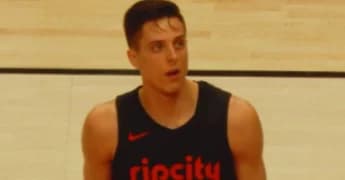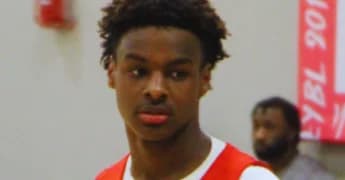Since the start of this offseason, NBA teams have invested more than $2.6 billion on Mid-Tier Players contracts. Yet, the majority of wealth remained in the hands of a few individuals, while numerous players competed for whatever cap-space scraps were left.
Big Contracts for a Select Few
Only six of the over 80 contracts signed this summer were valued at more than $100 million, while only 17 contracts exceeded $50 million. Athletes such as Gary Trent Jr., Monte Morris, and Delon Wright, who made over $8 million last season, had to accept minimum-wage deals.
New CBA’s Impact
The new CBA from the NBA had a major impact on this change. The CBA implemented restrictions on roster construction for teams going over the luxury tax threshold, causing teams to be more careful in salary negotiations. Trent and Caleb Martin are excellent illustrations.
Misreading the Market
Trent dreamed of making $25 million a year but had to accept a lower contract. Martin rejected a $65 million contract from the Miami Heat over five years, opting instead for a $40 million deal with the Philadelphia 76ers spanning four years. Klay Thompson and Buddy Hield also encountered challenging market conditions. Thompson departed the Warriors following a 13-year tenure, inking a $50 million three-year contract with the Dallas Mavericks. After asking for a trade, Hield agreed to a $37.8 million contract with the Warriors for four years.
Few Fortunate Deals
Even with the obstacles, certain players managed to secure substantial contracts. Tobias Harris agreed to a contract worth $52 million over two years with the Detroit Pistons. Kentavious Caldwell-Pope signed a $66 million contract with the Orlando Magic for three years, while Isaiah Hartenstein agreed to a three-year deal worth $87 million with the Oklahoma City Thunder.
A Glimmer of Hope
This difficult market situation might just be a temporary occurrence lasting for one year. New national TV deals are expected to cause a 10% annual increase in the salary cap. This expansion may offer teams increased flexibility in upcoming offseasons.
Looking Ahead
In the coming years, Trent, Thompson, and Hield will need to manage their contracts. Trent, specifically, has an opportunity to demonstrate his worth and lock in a more favorable contract next year. In the future, after Mid-Tier Players, lower-tier starters may think about exploring free agency but could choose to accept contract extensions from their current teams instead.
Since the start of this offseason, NBA teams have invested more than $2.6 billion on Mid-Tier Players contracts. Yet, the majority of wealth remained in the hands of a few individuals, while numerous players competed for whatever cap-space scraps were left.
Big Contracts for a Select Few
Only six of the over 80 contracts signed this summer were valued at more than $100 million, while only 17 contracts exceeded $50 million. Athletes such as Gary Trent Jr., Monte Morris, and Delon Wright, who made over $8 million last season, had to accept minimum-wage deals.
New CBA’s Impact
The new CBA from the NBA had a major impact on this change. The CBA implemented restrictions on roster construction for teams going over the luxury tax threshold, causing teams to be more careful in salary negotiations. Trent and Caleb Martin are excellent illustrations.
Misreading the Market
Trent dreamed of making $25 million a year but had to accept a lower contract. Martin rejected a $65 million contract from the Miami Heat over five years, opting instead for a $40 million deal with the Philadelphia 76ers spanning four years. Klay Thompson and Buddy Hield also encountered challenging market conditions. Thompson departed the Warriors following a 13-year tenure, inking a $50 million three-year contract with the Dallas Mavericks. After asking for a trade, Hield agreed to a $37.8 million contract with the Warriors for four years.
Few Fortunate Deals
Even with the obstacles, certain players managed to secure substantial contracts. Tobias Harris agreed to a contract worth $52 million over two years with the Detroit Pistons. Kentavious Caldwell-Pope signed a $66 million contract with the Orlando Magic for three years, while Isaiah Hartenstein agreed to a three-year deal worth $87 million with the Oklahoma City Thunder.
A Glimmer of Hope
This difficult market situation might just be a temporary occurrence lasting for one year. New national TV deals are expected to cause a 10% annual increase in the salary cap. This expansion may offer teams increased flexibility in upcoming offseasons.
Looking Ahead
In the coming years, Trent, Thompson, and Hield will need to manage their contracts. Trent, specifically, has an opportunity to demonstrate his worth and lock in a more favorable contract next year. In the future, after Mid-Tier Players, lower-tier starters may think about exploring free agency but could choose to accept contract extensions from their current teams instead.







